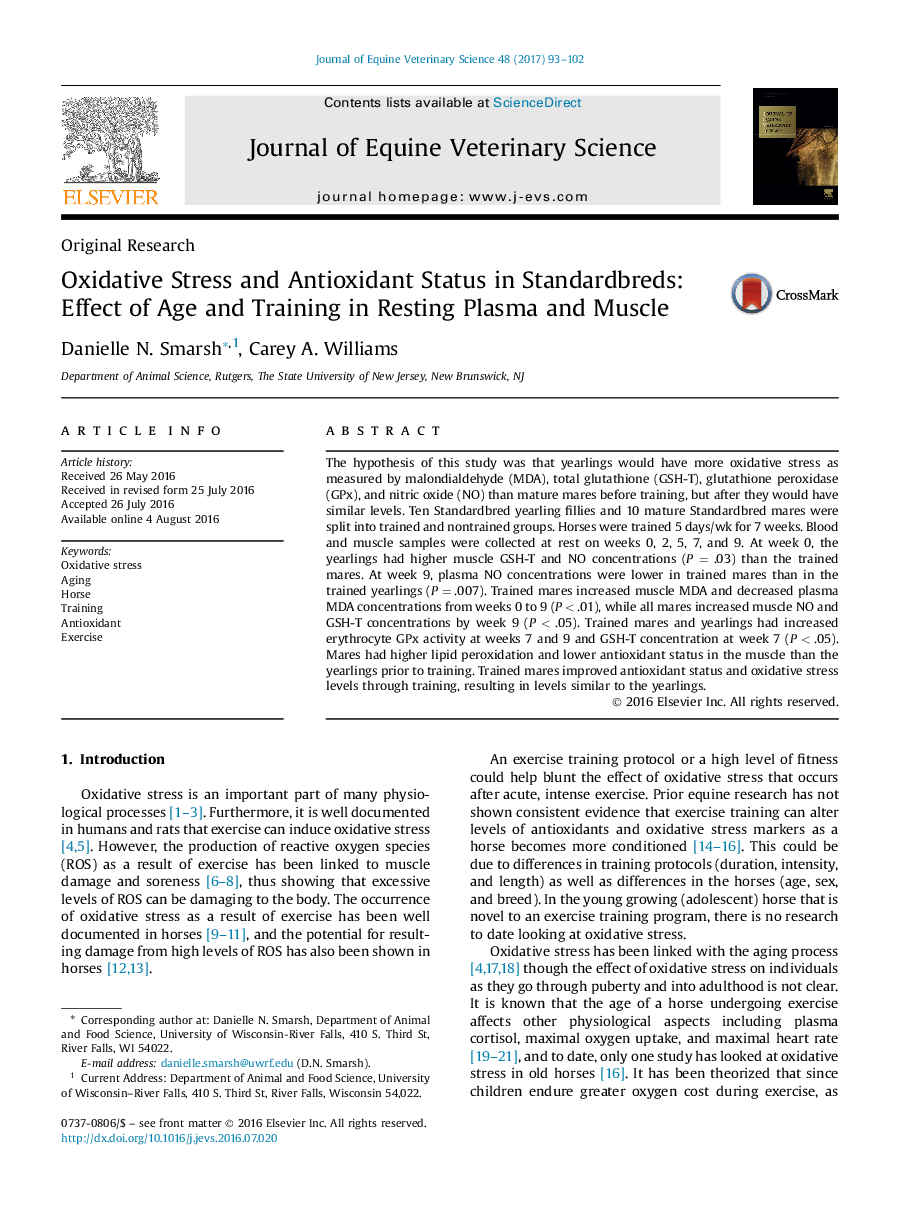| Article ID | Journal | Published Year | Pages | File Type |
|---|---|---|---|---|
| 5535719 | Journal of Equine Veterinary Science | 2017 | 10 Pages |
â¢Trained yearlings had elevated muscle nitric oxide and total glutathione (GSH-T) as compared to mares at week 9.â¢Trained mares and yearlings had increased erythrocyte glutathione peroxidase and GSH-T by week 9.â¢Mares had higher lipid peroxidation than yearlings prior to training.â¢After training, mares and yearlings had similar levels of oxidants and antioxidants.
The hypothesis of this study was that yearlings would have more oxidative stress as measured by malondialdehyde (MDA), total glutathione (GSH-T), glutathione peroxidase (GPx), and nitric oxide (NO) than mature mares before training, but after they would have similar levels. Ten Standardbred yearling fillies and 10 mature Standardbred mares were split into trained and nontrained groups. Horses were trained 5Â days/wk for 7 weeks. Blood and muscle samples were collected at rest on weeks 0, 2, 5, 7, and 9. At week 0, the yearlings had higher muscle GSH-T and NO concentrations (P = .03) than the trained mares. At week 9, plasma NO concentrations were lower in trained mares than in the trained yearlings (P = .007). Trained mares increased muscle MDA and decreased plasma MDA concentrations from weeks 0 to 9 (P < .01), while all mares increased muscle NO and GSH-T concentrations by week 9 (P < .05). Trained mares and yearlings had increased erythrocyte GPx activity at weeks 7 and 9 and GSH-T concentration at week 7 (P < .05). Mares had higher lipid peroxidation and lower antioxidant status in the muscle than the yearlings prior to training. Trained mares improved antioxidant status and oxidative stress levels through training, resulting in levels similar to the yearlings.
